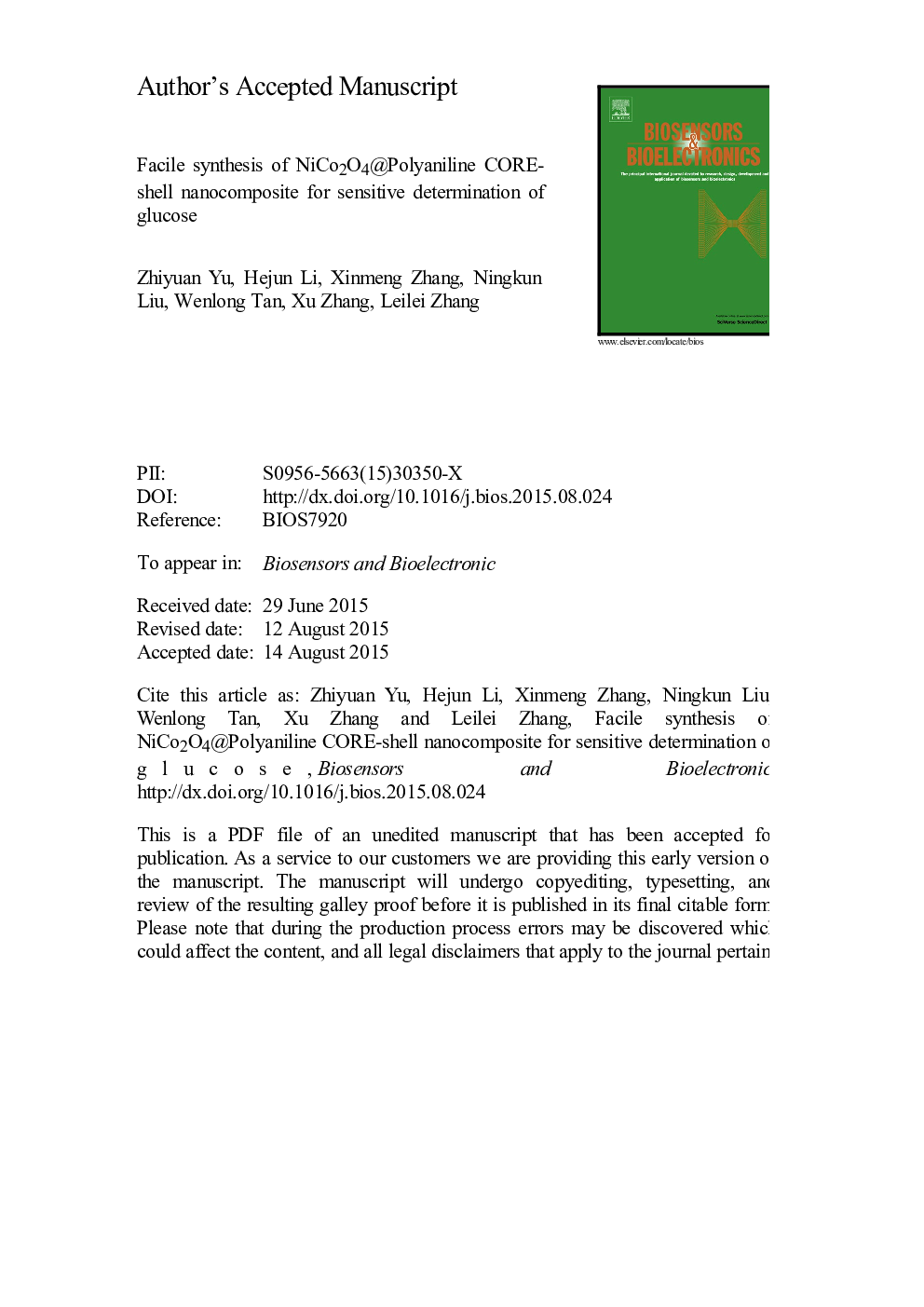| Article ID | Journal | Published Year | Pages | File Type |
|---|---|---|---|---|
| 7231551 | Biosensors and Bioelectronics | 2016 | 21 Pages |
Abstract
In this work, the core-shell structure of NiCo2O4@Polyaniline (NiCo2O4@PANI) nanocomposite is fabricated via a facile hydrothermal treatment followed by a post-Polyaniline (PANI) coating process. The synthesized materials are characterized by Transmission electron microscopy (TEM), X-ray diffraction (XRD), X-ray photoelectron spectroscopy (XPS) and Raman spectrometer. The biosensing properties of NiCo2O4@PANI composite and NiCo2O4 nanoparticles toward glucose are studied based on glassy carbon electrode. Electrochemical studies indicate that the obtained core-shell NiCo2O4@PANI composite shows higher electrocatalytic activity toward the oxidation of glucose, compared with NiCo2O4 nanoparticles. The enhanced performance is related to the core-shell structure of NiCo2O4@PANI composite and the outstanding conductivity of the polyaniline shell. At a potential of +0.5 V, the NiCo2O4@PANI nanocomposite modified glass carbon electrode demonstrates a wide linear range up to 4.7350 mM with sensitivity of 4.55 mA mMâ1 cmâ2 and detection limit of 0.3833 μM. It also shows significant electrochemical stability, good reproducibility and excellent selectivity. The results suggest that the NiCo2O4@PANI nanocomposite is a promising electrode material for electrochemical biosensor.
Related Topics
Physical Sciences and Engineering
Chemistry
Analytical Chemistry
Authors
Zhiyuan Yu, Hejun Li, Xinmeng Zhang, Ningkun Liu, Wenlong Tan, Xu Zhang, Leilei Zhang,
